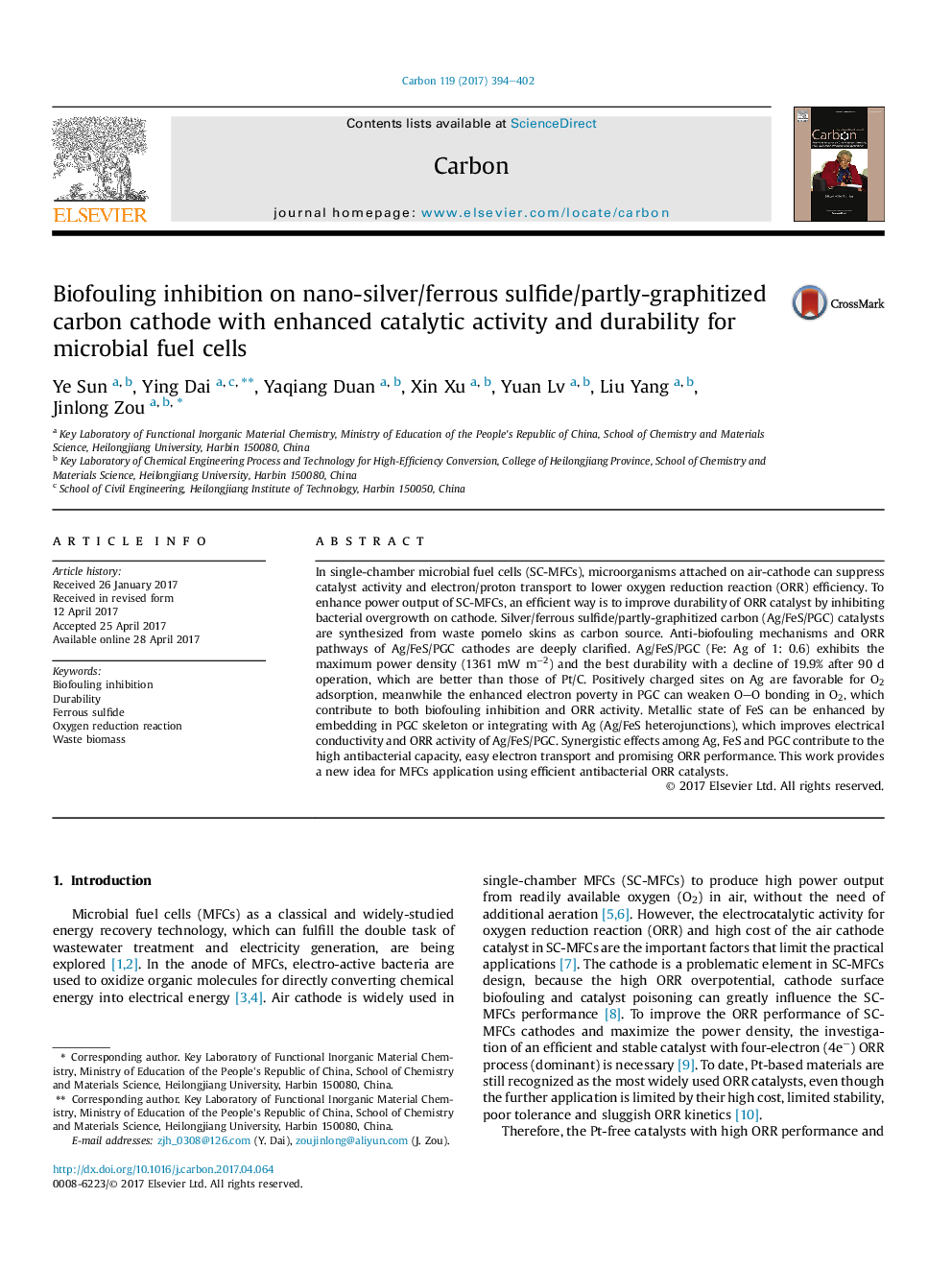| Article ID | Journal | Published Year | Pages | File Type |
|---|---|---|---|---|
| 5432123 | Carbon | 2017 | 9 Pages |
In single-chamber microbial fuel cells (SC-MFCs), microorganisms attached on air-cathode can suppress catalyst activity and electron/proton transport to lower oxygen reduction reaction (ORR) efficiency. To enhance power output of SC-MFCs, an efficient way is to improve durability of ORR catalyst by inhibiting bacterial overgrowth on cathode. Silver/ferrous sulfide/partly-graphitized carbon (Ag/FeS/PGC) catalysts are synthesized from waste pomelo skins as carbon source. Anti-biofouling mechanisms and ORR pathways of Ag/FeS/PGC cathodes are deeply clarified. Ag/FeS/PGC (Fe: Ag of 1: 0.6) exhibits the maximum power density (1361Â mWÂ mâ2) and the best durability with a decline of 19.9% after 90Â d operation, which are better than those of Pt/C. Positively charged sites on Ag are favorable for O2 adsorption, meanwhile the enhanced electron poverty in PGC can weaken OO bonding in O2, which contribute to both biofouling inhibition and ORR activity. Metallic state of FeS can be enhanced by embedding in PGC skeleton or integrating with Ag (Ag/FeS heterojunctions), which improves electrical conductivity and ORR activity of Ag/FeS/PGC. Synergistic effects among Ag, FeS and PGC contribute to the high antibacterial capacity, easy electron transport and promising ORR performance. This work provides a new idea for MFCs application using efficient antibacterial ORR catalysts.
Graphical abstractDownload high-res image (226KB)Download full-size image
